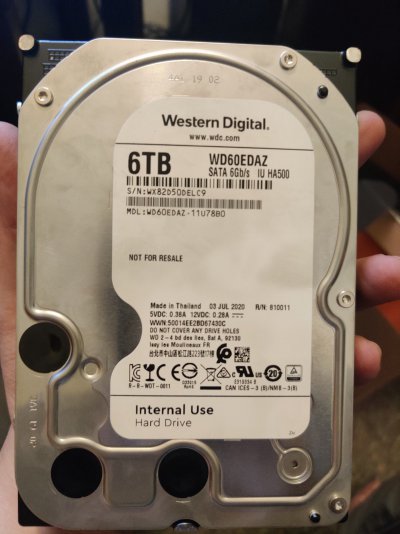I shucked a Western Digital My Book 6TB model. If you're wondering what that means shucking is what some people call taking the hard drive out of an external hard drive to use internally.
The drive was a WD60EDAZ. From what I've found on the net - this post may be useful for other people: The HDD Platter Capacity Database: Western Digital - 3.5" (RE/Gold/Se/Black/Red/"Internal Use") (rml527.blogspot.com), the 6TB EDAZ is an SMR drive. The link suggests that TRIM support is a reliable indicator of an SMR drive - I find this believable, and can confirm that the drive shows TRIM support. From what I know, most WD external drives <8TB are SMR drives.
You can find a phot of the shucked drive attached.
As for shucking it, I figured it out based on what my friend told me, but I'm happy to explain what I did if anyone wants.
The drive was a WD60EDAZ. From what I've found on the net - this post may be useful for other people: The HDD Platter Capacity Database: Western Digital - 3.5" (RE/Gold/Se/Black/Red/"Internal Use") (rml527.blogspot.com), the 6TB EDAZ is an SMR drive. The link suggests that TRIM support is a reliable indicator of an SMR drive - I find this believable, and can confirm that the drive shows TRIM support. From what I know, most WD external drives <8TB are SMR drives.
You can find a phot of the shucked drive attached.
As for shucking it, I figured it out based on what my friend told me, but I'm happy to explain what I did if anyone wants.




